First, Do No Harm – Things you should know about performance servos
We see fewer servos in later-model transmissions, but we still deal with them when rebuilding older units. For the most part it is business as usual, except for a few performance applications where a deeper understanding of servo operation can make all the difference when trying to make a transmission stand up to higher power.

6L80/6L90: No Movement After Repair
This is the tale of two transmission technicians: one at the beginning of his career and another who grew up in the business. What they have in common is working on the 6L80/6L90 for the first time. Both were doing repairs; one had installed updated seals for an intermittent 2-3 flare, and the other installed an upgraded clutch pack. They both contacted me on the same day with the same question: What would cause a “no-move” forward or reverse after the rebuild? Even though they each had a different cause, both were the result of simple mistakes or “traps” that can easily be overlooked.
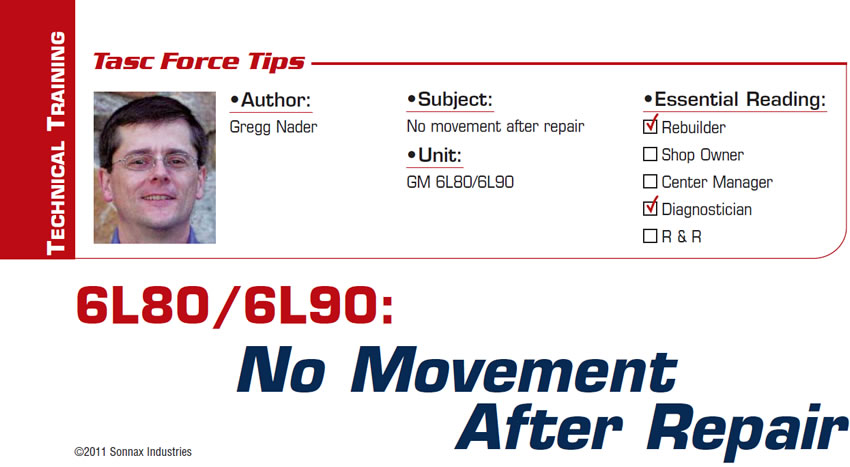
A Fly on the Wall
When transmission parts fail or have problems, I often think about the decisions made along the way that resulted in the problematic part being used in production. A common sight at many transmission benches these days is a “cracked” separator plate found in 2001 and newer 4R70W/4R75E units. There is more to this story than just the cracked plates discovered during the rebuild, and it started long ago when the decision was made to eliminate a valve-body stiffener plate. I would love to have been a fly on the wall back then, listening to the reasons why it was OK to eliminate the stiffener plate.
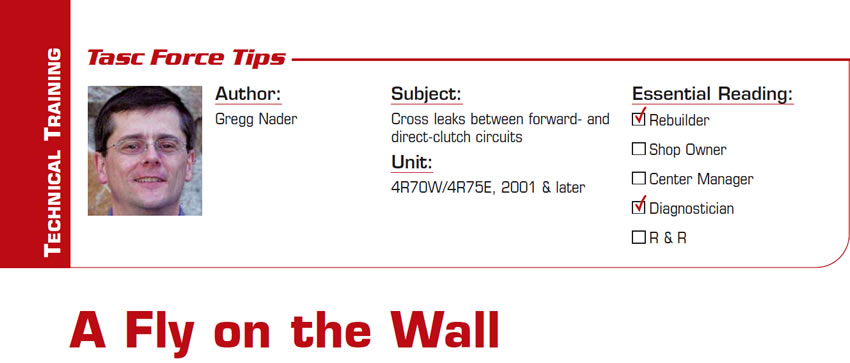
Easy Fix for 4T60-E Accumulator-Housing Pin Wear
Accumulator-piston wear is common and fixes are readily available, but the little pocket where the piston pin sits in the accumulator housing also wears, and this is a more-difficult problem to solve. This article describes a way to salvage accumulator housings using parts and tools you have lying around in your shop.
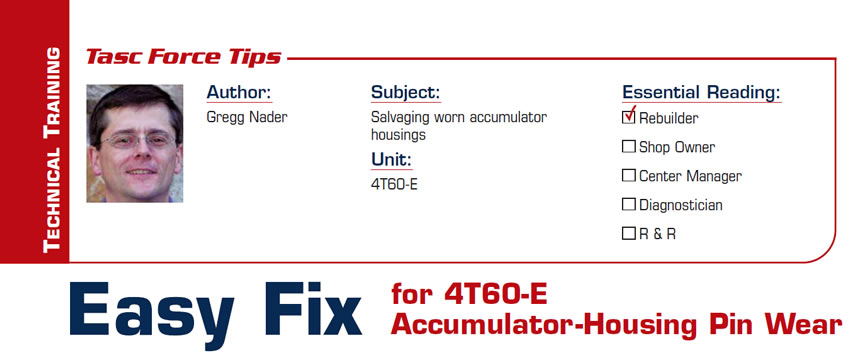
A New Trick in the Bag
For years we have known that the 4L60 and 4L60-E second-gear servo came in three different sizes. Now there is a fourth OEM servo size that gives builders a new choice when looking for something with increased performance.
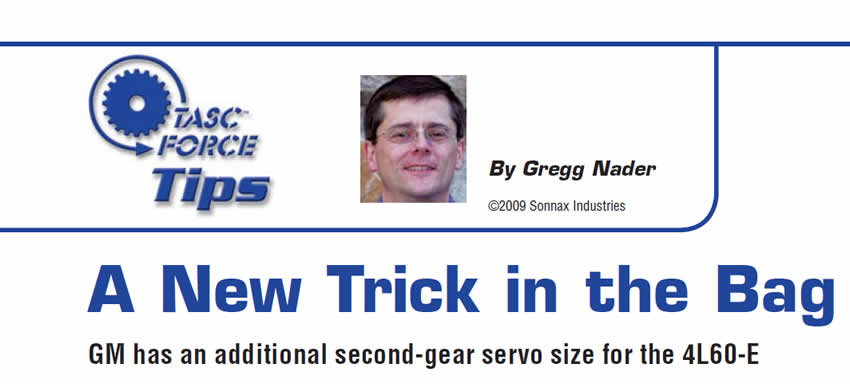
Chrysler RWD Valve-Body-Linkage Pivot Wear
The basic design of the internal shift linkage of Chrysler/Dodge rear-wheel-drive transmissions has not changed since 1967 (Figure 1). As movement, vibration and wear take their toll over time, looseness of the internal linkage becomes a big problem. When there is excess movement in the manual lever, the manual valve is not held precisely in position, resulting in fluid leakage, cross leaks and unit failure.
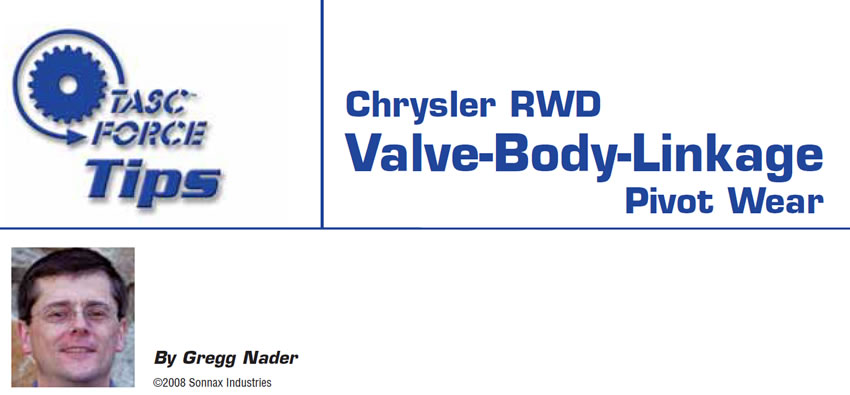
An Easier Way to Rebuild Planets
Many transmission shops are trying to stay ahead in an increasingly competitive market by offering warranties longer than the original new-vehicle factory warranty. Those shops putting their bottom line on the line have to pay attention to the planets if they’re not going to have a high rate of comebacks, but, because of the high cost, installing all new OEM planets is rarely a good option. The alternatives include reusing the original parts, finding what you hope are good used parts, using someone else’s rebuilt parts, taking a chance on new aftermarket parts, or disassembling, inspecting and reassembling planets in your own shop.

Wear in Magnesium Transfer-Case Housings
One OEM supplier estimates that 2 million transfer-case housings have been made from magnesium1. In the aftermarket, these parts have been working their way into transmission shops at an ever-increasing rate. The questions I discuss here are why magnesium transfer-case housings wear so dramatically while their similar aluminum counterparts do not, and how this affects repair choices.

A Quick Fix for an Earlier Fix
Do you recall that feeling you get when you first figure out that the transmission on your bench has been worked on before? The signs could be obvious, like a painted case, but other times it’s not until you start tearing it down that you see clues that someone has been there before you. For me it is always a bit of a disappointment, because I know I have to watch carefully for changes that someone else made that could affect the transmission when I’m finished with it.

4L60-E Flares on 2-3 Shift (Now What?)
In past TASC Force™ Tech Tips, I have stressed the benefits of testing electrical circuits by measuring current draw. I have also commented that finding new information adds pieces to the puzzle and helps to bring the whole technical picture into better view. This month’s topic is an example of using current-draw testing to uncover an additional cause for 2-3 shift flare on 4L60-E transmissions.

4R44E, 5R55E Case-Wall Movement and Comebacks
I’ve heard complaints of blown-out valve-body gaskets, loose valve body bolts and various otherwise unexplained symptoms due to cross leaks in Ford 4R44E through 5R55E units.
These problems are usually accompanied by an odd wear pattern or “fuzzing” visible on valve body gaskets and witness marks on the separator plate (see Figure 1).
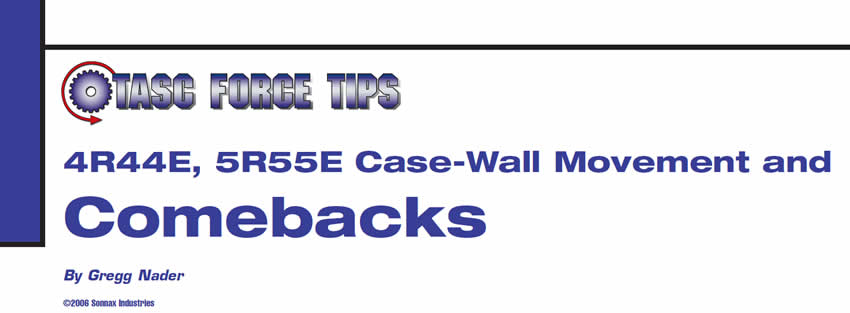
Reprogramming Our Procedures
We’ve heard many times how we can fix transmission problems by reprogramming the computer and how important it is to check for updates when dealing with a new problem or symptoms. Most of the technical-information sources have been preaching this for several years now, but it is important to note that you cannot rely on traditional service bulletins for complete information on vehicle-software updates.

